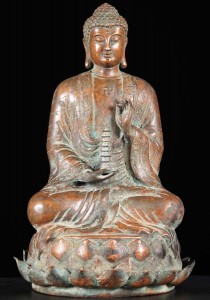
The word “swastika” is derived from the Sanskrit svastika – “su” (“good” or “auspicious”) united with “asti” (“it is”), along with the diminutive suffix “ka.” The swastika literally means, “It is good” or”all is well”. The swastika is a cross with four arms of equal length, with the ends of each arm bent at a right angle. It is found worldwide in the art of the Egyptians, Romans, Greeks, Celts, Native Americans, and Persians. It is also related to Hinduism, Buddhism, Jainism, and is used in the flag of the Nazi Party. People use swastika as a charm to bring good fortune.
Meaning of swastika in Hinduism
It is believed that the word appeared for the first time Harivamsha Puranaand is noted to be absent in the Vedic Sanskrit. The word is found to be used, both in Ramayana and Mahabharata, but with a different meaning. Hindus consider the swastika as a symbol of auspiciousness, prosperity, and good fortune and use it to mark the opening pages of account books, pooja, doors, offerings, and thresholds. It is believed to have the power to ward off misfortune and negative forces from its surroundings.
The swastika is considered as Lord Ganesha, by some sects of Hindu people, and is worshiped to bring in good luck or fortune. Some people believe that the swastika’s cross represents God and creation. They consider the four bent arms stand for the four human aims (purushartha) – righteousness (dharma), wealth (artha), love (kama), and liberation, (moksha). It is a persuasive emblem of Sanatana Dharma (the eternal truth). Swastika also represents the world wheel, where the eternal life keeps on changing from one point to another, around the fixed center, God.
In Hinduism, the right-hand (clockwise) swastika is one of the 108 symbols of the sun and the god Vishnu, while the left-hand (counterclockwise) swastika represents the night, Goddess Kali, and magic. It is also regarded as a symbol of the muladhara chakra, the center of consciousness at the base of the spine.
Meaning of swastika in Buddhism
Just like the Hindus, the Buddhists also used the swastika to mark the beginning of Buddhist texts as they consider it a symbol of universal harmony, prosperity, plurality, good luck, abundance, dharma, fertility, long life, and eternity. In different parts of the world, the swastika is given a different meaning by the Buddhist. For instance, In Tibet, the swastika was a graphical representation of eternity. There are 65 auspicious symbols on the footprint of the Buddha and the swastika is considered as the first one. You can also find the swastika symbol imprinted on the body, palms, chest, or feet of Buddha. It is used to mark the beginning of sacred texts or as a clothing decoration. The Buddhists in India, consider swastika as “The Seal on Buddha’s Heart.”
From ancient times, Swastika is considered noble, which is prominent in most cultures throughout history. It is also the most liked symbol of Aryans.
